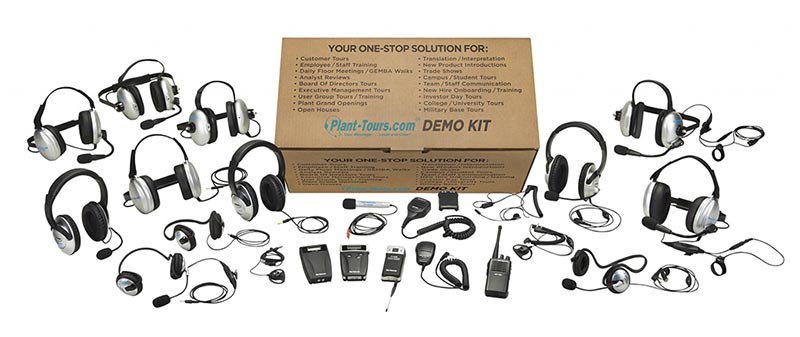How Does Simultaneous Interpreting Equipment Work?
Simultaneous interpreting equipment can revolutionize the common practice of using interpreters. However, many are unaware of how this technology works. I’ve spent years in the communications business and have witnessed the challenges of interpreting in different languages. I also understand why some are initially hesitant to invest in this technology.
So, let’s explore the use of simultaneous interpreting and translation equipment and why this can be a more efficient and effective approach to multilingual communication. This article will detail how simultaneous equipment works, what it’s used for, and the various options in terms of equipment setups.
Simultaneous interpreting equipment facilitates real-time translation. Interpreters listen to a speaker’s words and simultaneously interpret them into another language as they are speaking. This allows the audience members to hear the interpretation in their preferred language. The interpreter speaks into a microphone connected to a transmitter which then sends the audio signal to audience receiver units with headphones. This allows users to listen to the interpretation without interfering with the presentation of the original speaker.
Most equipment will work wirelessly, operating on a specific frequency/channel to allow multilingual interpretation for different groups or individuals with multiple language interpretations without interference.
What Pieces of Equipment Are Needed?
The specific equipment required for simultaneous or consecutive interpretation systems will vary depending on the venue, the size of the audience, the number of languages that need to be interpreted, and any specific event requirements such as if two-way communication is required. Interpreting service providers will have specialized equipment that can cater to various events and setups. The standard base equipment required for simultaneous interpreting will include:
-
- Transmitter
-
- Receiver
-
- Headsets
-
- Microphones
-
- Interpreters Booths

How Does the Interpreter Communicate with Listeners?
Interpreters have excellent listening and language skills so can accurately comprehend the speaker’s message and then quickly process the information into the preferred language of the desired audience. Interpreters call the original language being spoken by the speaker the ‘source language’, and the language in which the interpretation is provided is the ‘target language’. The communication process involves interpreters using microphones to transmit to the intended audience in their target language.
Listeners use headsets and receivers to receive the targeted message directly usually through a wireless system. In a multilingual setting, listeners can choose the appropriate channel to listen to their desired language without interference. Interpreters need to speak directly into the microphone in a clear voice ensuring the information is easy to understand. They should also be aware of the limitations of background noise and should ensure both headsets and microphones are in good condition and set to the correct channel.
What is Simultaneous Interpreting Equipment Used For?
Simultaneous interpreting equipment is used to facilitate language interpretation in real time during tours, presentations, conferences, meetings, and other events where multiple languages other than English may be spoken. Examples include:
Plant Tour Guide Systems –
Our clients tell us that simultaneous interpreting is especially useful when giving tours of factories, warehouses, and other industrial sites to international visitors and prospective clients. Simultaneous interpreting equipment allows for immediate translation between the tour guide and visitors via noise-cancelling headsets so all participants can fully understand the information even in situations with high background noise.
Multilingual Lectures –
In scenarios where lectures are required to be multilingual, such as a university with diverse students and faculty members, lectures may be conducted in multiple languages. In such cases, the interpreters working with headsets in soundproof booths will simultaneously interpret the words into the target languages.
International Conferences –
Simultaneous interpreting equipment is common in international conferences where participants from different countries gather. In these events, multiple languages are spoken so simultaneous interpreters play a crucial role in ensuring effective communication by interpreting in real time. Attendees simply select the language channel on their receivers for their preferred language.
Different Types of Equipment Setups
There are several different ways interpreting equipment can be set up. In our experience the configuration used will vary depending on whether the interpreter is close to the speaker or in a different room or remote location, whether there is a soundproof booth available, the size and location of the audience, and the number of target languages required. Some of the main setups include:
Whisper Radios
Lightweight devices that are easily portable making them convenient. They are also relatively cheap and ideal for short-range communication within a venue. But their limited range can be a disadvantage.
Interpreter Booths
Provide enhanced audio quality ensuring the interpretation is delivered accurately and clearly. Suitable for large events where many languages may be spoken simultaneously, they also have a professional image giving a sense of credibility to the venue and the interpretation service provider. But they do require a designated space and can be expensive. Tabletop booths are a cheaper alternative.
Permanent Installations
Wired communication systems integrated into existing infrastructure can provide a stable and reliable means of interpretation that is suitable for long-term usage. This can be expensive to install and maintain, requiring professional installation and maintenance and once installed they are not easily adaptable to changing needs. Whereas portable radio solutions can be moved around in a carrying case.

FAQ
-
- Can interpreting equipment be used outdoors?
-
- Some can be used for outdoor venues, but it is important to check that the equipment is designed for outdoor use and is weatherproof.
-
- Can interpreting equipment be used outdoors?
-
- Can interpreting equipment be used outdoors?
-
- Some can be used for outdoor venues, but it is important to check that the equipment is designed for outdoor use and is weatherproof.
-
- Can interpreting equipment be used outdoors?







